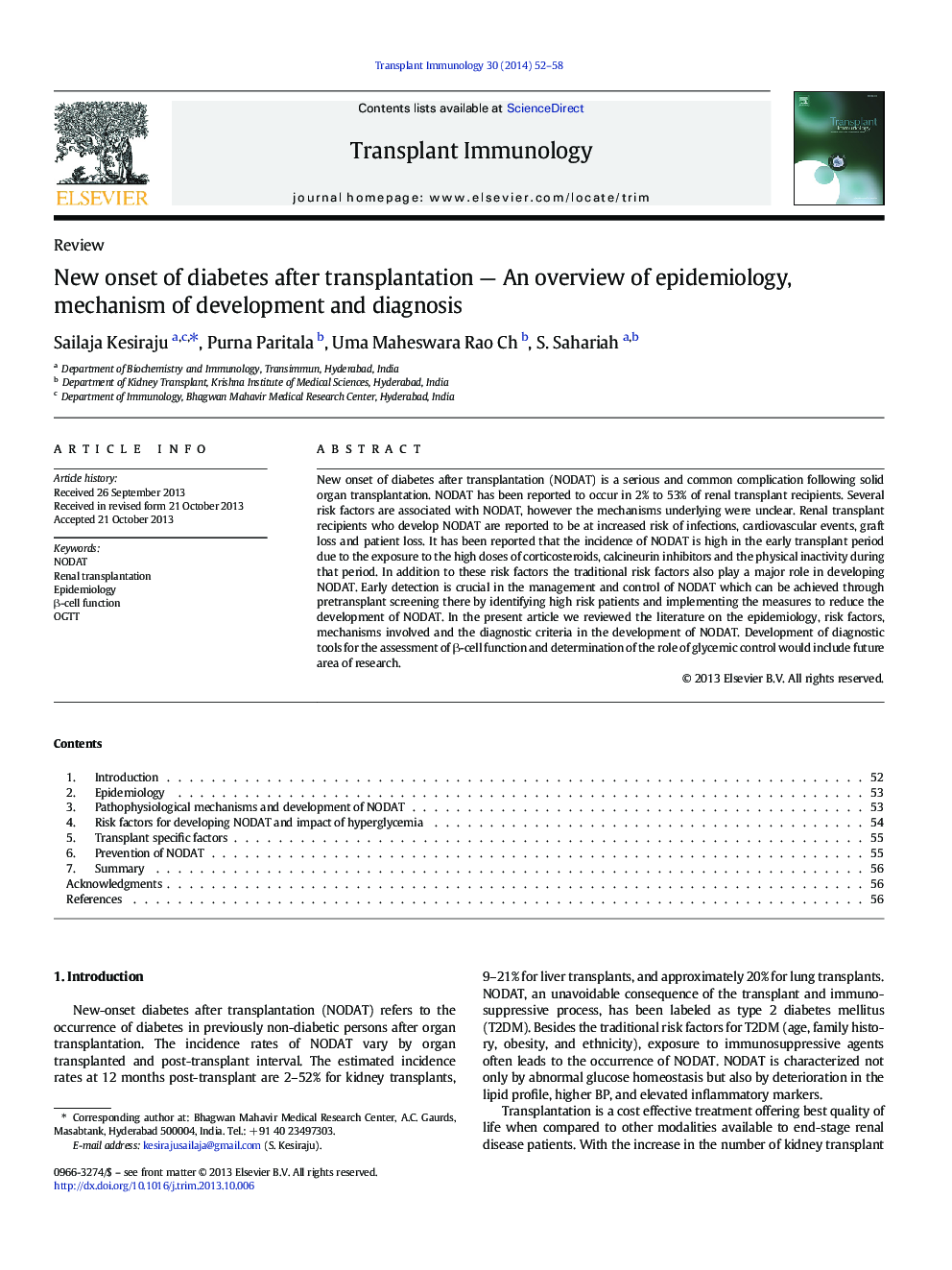| Article ID | Journal | Published Year | Pages | File Type |
|---|---|---|---|---|
| 6126014 | Transplant Immunology | 2014 | 7 Pages |
Abstract
New onset of diabetes after transplantation (NODAT) is a serious and common complication following solid organ transplantation. NODAT has been reported to occur in 2% to 53% of renal transplant recipients. Several risk factors are associated with NODAT, however the mechanisms underlying were unclear. Renal transplant recipients who develop NODAT are reported to be at increased risk of infections, cardiovascular events, graft loss and patient loss. It has been reported that the incidence of NODAT is high in the early transplant period due to the exposure to the high doses of corticosteroids, calcineurin inhibitors and the physical inactivity during that period. In addition to these risk factors the traditional risk factors also play a major role in developing NODAT. Early detection is crucial in the management and control of NODAT which can be achieved through pretransplant screening there by identifying high risk patients and implementing the measures to reduce the development of NODAT. In the present article we reviewed the literature on the epidemiology, risk factors, mechanisms involved and the diagnostic criteria in the development of NODAT. Development of diagnostic tools for the assessment of β-cell function and determination of the role of glycemic control would include future area of research.
Related Topics
Life Sciences
Immunology and Microbiology
Immunology
Authors
Sailaja Kesiraju, Purna Paritala, Uma Maheswara Rao Ch, S. Sahariah,
